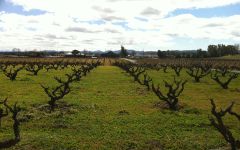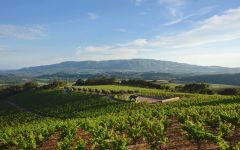Turley Judge Bell Vineyard Zinfandel 2017
-
Robert
Parker



Product Details
Your Rating
Somm Note
Winemaker Notes
Professional Ratings
-
Robert Parker's Wine Advocate
From vines averaging 80 years old, the 2017 Zinfandel Judge Bell has a medium to deep ruby-purple color and an earthy/savory nose of smoked meats, toasted coconut and dried red and black fruits. Medium-bodied, it gives savory fruits in the mouth with firm, slightly grippy tannins and good freshness, finishing long.
Other Vintages
2021- Vinous
-
Robert
Parker
-
Robert
Parker
-
Robert
Parker
-
Robert
Parker







Turley Wine Cellars was founded in 1993 by Larry Turley and makes forty-seven wines, the vast majority of which are single vineyard designate Zinfandels and Petite Syrahs. By focusing on old vine vineyards in particular, Turley aims to both create and preserve California’s unique winemaking culture.
All of Turley’s vineyards are either certified organic by California Certified Organic Farmers or somewhere in the process, and the winery uses all natural yeasts in the fermentations.
Turley aims to be stewards of some of California’s most distinctive vineyards, producing authentic wines that reflect their heritage.

Unapologetically bold, spice-driven and jammy, Zinfandel has secured its title as the darling of California vintners by adapting well to the state's diverse microclimates and landscapes. Born in Croatia, it later made its way to southern Italy where it was named Primitivo. Fortunately, the imperial nursery of Vienna catalogued specimens of the vine, and it later made its way to New England in 1829. Parading the true American spirit, Zinfandel found a new home in California during the Gold Rush of 1849. Somm Secret—California's ancient vines of Zinfandel are those that survived the neglect of Prohibition; today these vines produce the most concentrated, ethereal and complex examples.

As the lower part of the greater Sierra Foothills appellation, Amador is roughly a plateau whose vineyards grow at 1,200 to 2,000 feet in elevation. It is 100 miles east of both San Francisco and Napa Valley. Most of its wineries are in the oak-studded rolling hillsides of Shenandoah Valley or east in Fiddletown, where elevations are slightly higher.
The Sierra Foothills growing area was among the largest wine producers in the state during the gold rush of the late 1800s. The local wine industry enjoyed great success until just after the turn of the century when fortune-seekers moved elsewhere and its population diminished. With Prohibition, winemaking was totally abandoned, along with its vineyards. But some of these, especially Zinfandel, still remain and are the treasure chest of the Sierra Foothills as we know them.
Most Amador vines are planted in volcanic soils derived primarily from sandy clay loam and decomposed granite. Summer days are hot but nighttime temperatures typically drop 30 degrees and the humidity is low, making this an ideal environment for grape growing. Because there is adequate rain throughout the year and even snow in the winter, dry farming is possible.
